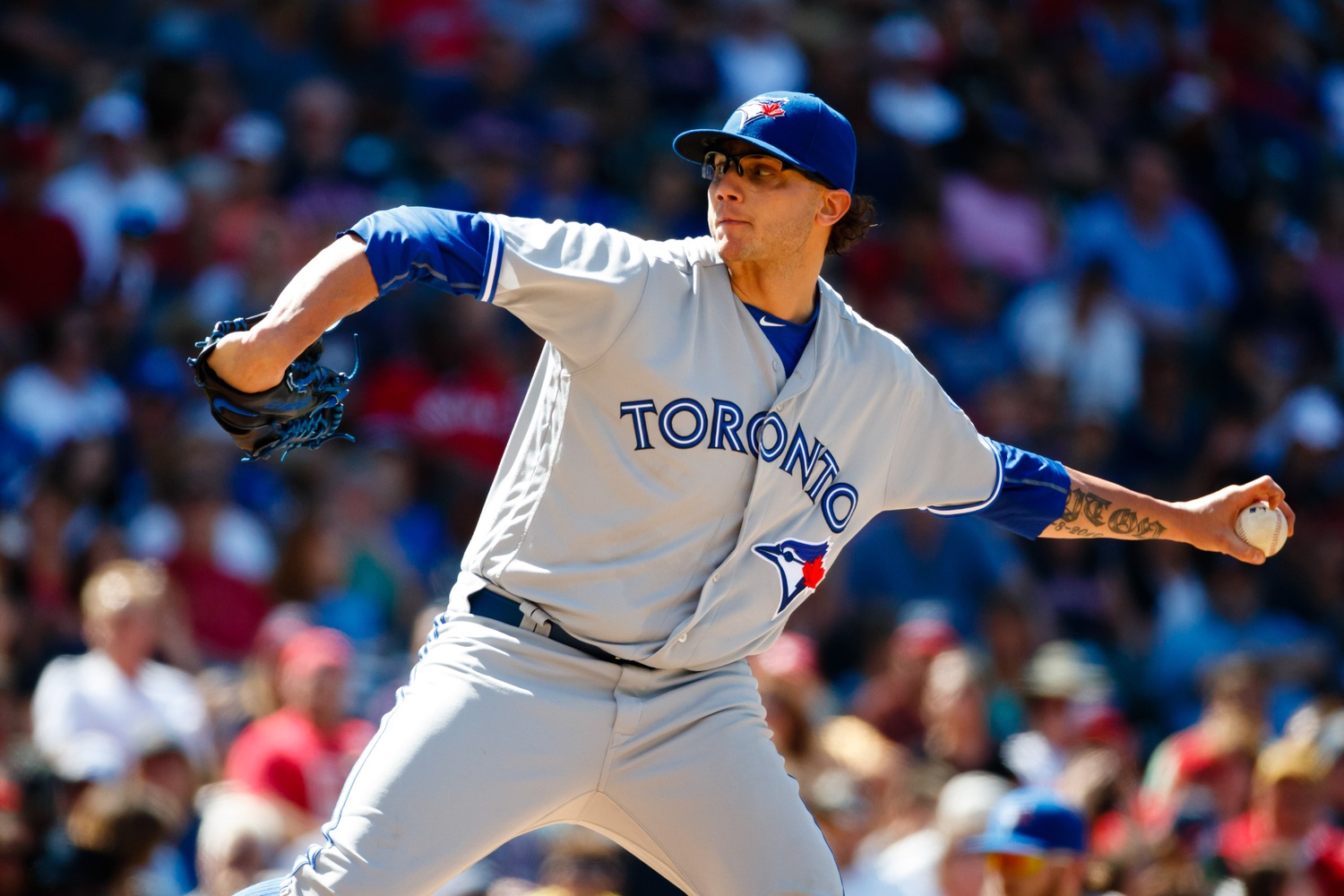Much has been written about the Blue Jays’ impending offseason and the fate of the team’s big name free agents: Jose Bautista and Edwin Encarnacion. Among the team’s second tier free agents, consensus appears to have Michael Saunders and R.A. Dickey likely departing alongside the aforementioned sluggers. One forgotten free agent to be is Brett Cecil; a player who many just assumed would leave to pursue a big contract on the back of an immaculate 2015.
For Cecil, his free agent year is a bit of bad timing. Had he hit the market last season he would’ve been paid handsomely as one of the top relievers in all of baseball. There was simply no way the Blue Jays would pony up to pay for their top setup man, especially considering the other players in limbo. That’s well in the rearview mirror now, as Cecil’s poor season might have opened the door for a return.
It’s no secret that Cecil has struggled this year. Our own Gideon Turk dove into the numbers to see what’s been ailing the lefty and it appears there’s nothing overtly wrong with him. His velocity, movement and usage have all held steady. His command has wavered a little bit, but he’s also been bitten by a bit of bad luck (he’s sporting a HR/FB rate of 19.2 percent, well above his career mark of 11.9 percent). There are problems, sure, but nothing that screams out for a drop of this magnitude.
That alone points to potential for a return to form (or something close to it) going forward. Would that notion, coupled with Cecil’s depressed value, be enough to tempt the Jays into bringing back their long-time left hander? And at what price?
With that in mind, I took a look at left handed relievers who have signed deals in the past three years to see how Cecil stacks up. Cecil is currently making $3.8 million so I ignored quality relievers who are making peanuts while still under team control.
As you can see, Cecil is one of the rare few to have had a down year right before hitting free agency. He and Antonio Bastardo both suffered seasons well below their career norms (it should be noted that average DRA and WARP numbers are calculated with only full-time relief seasons) but that didn’t stop Bastardo from getting a nice deal from the Mets.
In terms of strikeout stuff, Cecil actually matches up well with Tony Sipp’s superb 2015. The only issues are Cecil’s list-high WHIP and ERA. Those are hardly the best ways to evaluate a pitcher but it’s tough to deny that those are ugly numbers. His WARP and DRA this year are well off his career averages as a reliever, but as Gideon showed, he’s not all that far removed from the stuff that made him a successful setup man for the past three seasons.
While signing a reliever with an ERA north of four might be a tough sell to any fan base, it’s not as though teams haven’t taken chances on pitchers before. Zach Duke and Sean Burnett on the list above were essentially signed on the back of one great year. Duke has managed to continue his excellent work while Burnett’s injury problems have prevented us from making a final judgment. Point being, it’s not unprecedented for teams to ignore much larger samples to chase a promising performance. In Cecil’s case, teams would be ignoring the smaller sample in hopes of some rebound that seems like a safer bet on the surface and might push his market value up a shade.
In the end, with relative youth and proven performance on his side, Cecil seems in line to make somewhere north of $6 million annually on a multi-year deal. His sterling track record should make up for the 2016 blip on the radar whereas the other players on the list were rewarded for their upward trend. While he’s in the midst of a down year, Cecil is almost surely the best pitcher on the list above and it seems that $6 million is simply the going rate for quality left handed relief. Any team that could sign him at Boone Logan terms (three years, $5.5M) or less would be looking at a great signing. He wasn’t going to approach Andrew Miller terms (four years, $9M) but probably could’ve pushed his way towards the $8 million threshold.
A season in line with his normal output would’ve probably priced Cecil out of Toronto’s budget but it feels like the Jays will have some payroll to work with this offseason. Whether they choose to keep Cecil in the fold remains to be seen but betting on a bounce back could pay off down the line. Getting a reliever of Cecil’s caliber on a possible slight underpay would be a slam dunk deal for any team, and the Jays would surely love to reap the benefits of any positive regression.
There’s a school of thought out there that says you should never pay big money for relievers. What price would be right for Cecil to you?
Lead Photo: Rick Osentoski-USA TODAY Sports

